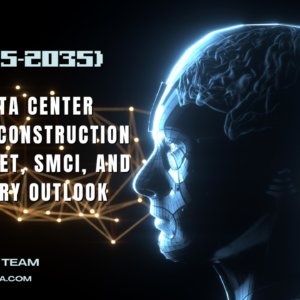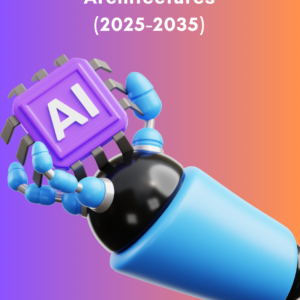1. Executive Summary: The Role of AI Transceivers in High-Performance Computing
- Key Finding: AI transceivers set to become a $XX billion market by 2030, driven by advancements in AI and HPC clusters.
- Market Opportunity: Understanding the impact of Fabrinet-manufactured transceivers and direct NVIDIA production on cluster performance.
- Strategic Insight: Ethernet vs. InfiniBand – Which networking technology leads the future of AI workloads?
2. Technical Overview of AI Transceivers
- Definition and Role: How AI transceivers enable communication between GPUs, CPUs, and AI accelerators in high-performance computing (HPC).
- Key Applications: AI transceivers’ roles in machine learning (ML), deep learning (DL), and distributed training in AI clusters.
- Emerging Trends: Optical interconnects and the push towards faster, more energy-efficient transceiver technologies.
3. Fabrinet-Manufactured vs. NVIDIA-Produced Transceivers
- Technical Capabilities:
- Data transmission rates (Gbps/Tbps)
- Power efficiency and energy consumption
- Signal integrity and data reliability
- Compatibility with NVIDIA GPUs and AI systems
- Cost Considerations:
- Comparison of manufacturing costs between Fabrinet and NVIDIA
- Factors driving economies of scale
- Supply chain management and impact on pricing
- Analysis of cost-to-performance ratio
- Performance Comparison:
- Reliability benchmarks and failure rates
- Thermal management and cooling solutions
- How both transceiver types integrate into large-scale AI infrastructures
- Case Study: Comparing performance in a high-density AI cluster with Fabrinet vs. NVIDIA transceivers
4. Ethernet vs. InfiniBand for AI Clusters: A Technical Comparison
- Technical Characteristics:
- Bandwidth capabilities and data transfer speeds
- Latency profiles: Ethernet’s evolution vs. InfiniBand’s low-latency edge
- Scalability in AI environments: How each handles growing AI cluster sizes
- Protocol efficiencies: Comparing the protocol stack of Ethernet vs. InfiniBand for AI
- Impact on AI Cluster Performance:
- Real-world data transfer speeds in AI workloads (inference vs. training)
- Handling network congestion during large-scale distributed training
- InfiniBand’s specialized role in supporting high-bandwidth, low-latency AI tasks
- Expert Insight: “Why InfiniBand remains the gold standard for AI, but Ethernet is catching up fast.”
- Performance Outcomes:
- Scenarios where Ethernet excels: Cost-effective solutions for smaller AI clusters
- Use cases favoring InfiniBand: High-performance AI clusters requiring ultra-low latency
- Benchmark Comparisons: AI-specific workload performance metrics for Ethernet and InfiniBand across 10,000+ nodes
5. Factors Influencing Networking Choice in AI Clusters
- Workload Characteristics:
- How different AI tasks (training vs. inference) influence networking decisions
- Performance needs for scaling AI workloads across distributed environments
- Cluster Size and Scaling Requirements:
- How the number of nodes and GPUs impacts networking technology selection
- Total Cost of Ownership Considerations:
- Capital and operational expenditures (CapEx/OpEx) for Ethernet and InfiniBand
- Long-term savings vs. performance investments in high-speed networking
- Existing Infrastructure Compatibility:
- Ease of integration with legacy systems
- Compatibility with cloud and hybrid AI environments
6. Future Trends in AI Networking
- Emerging Standards and Technologies:
- The role of 800G and 1.6T Ethernet standards in AI clusters
- Next-gen InfiniBand: What’s on the horizon for ultra-low-latency AI networking?
- Convergence of Ethernet and InfiniBand:
- How Ethernet is evolving to compete with InfiniBand in AI environments
- Possible convergence of features and performance for large-scale AI clusters
- Potential Disruptors in AI Networking:
- AI-optimized networking technologies: Smart NICs, offload engines, and edge processing
- The role of quantum networking in future AI infrastructures
7. Market Dynamics of AI Transceivers and Networking Technologies
- Adoption Trends:
- Current market penetration of Ethernet vs. InfiniBand in AI data centers
- Adoption trends for AI transceivers produced by Fabrinet vs. NVIDIA
- Key Players:
- Overview of major players (NVIDIA, Mellanox, Fabrinet, Arista, and more)
- Partnerships and collaborations shaping the future of AI networking gear
- Investment Opportunities:
- High-growth areas in AI transceivers and networking gear
- Mergers and acquisitions in the high-speed networking space
8. Technical Challenges and Innovations in AI Networking
- Bandwidth Bottlenecks:
- Overcoming limitations in data throughput for large-scale AI models
- The role of optical interconnects in reducing bottlenecks
- Innovations in Optical Transceivers:
- Evolution of high-performance transceivers for AI workloads
- Integrating AI-specific networking features for edge and core networks
- Case Study: How Ethernet and InfiniBand innovations have impacted AI cluster performance at leading cloud providers
9. Cost-Performance Trade-offs in Networking Gear for AI Clusters
- TCO Analysis of Networking Approaches:
- Comprehensive comparison of total cost of ownership for Ethernet vs. InfiniBand
- Factors impacting long-term cost savings in AI data centers
- Performance per Dollar Comparisons:
- Balancing cost, scalability, and performance for AI workloads
- Which networking approach offers the best ROI for AI infrastructure?
- Long-Term Investment Considerations:
- Strategic investments in networking gear to future-proof AI clusters for 2030 and beyond
10. Strategic Recommendations for AI Infrastructure Builders
- Key Takeaways: Ethernet vs. InfiniBand — Making the right choice for your AI infrastructure
- Top 5 Recommendations for CIOs: How to optimize AI cluster performance through smart networking decisions
- Future Outlook: Where the AI transceiver market and high-speed networking for AI are headed





